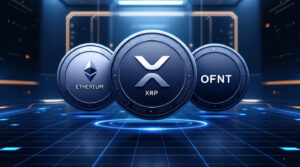July 2025 Blockchain Trends: Key Insights for Future Innovations

Major Developments in Digital Asset Offerings by Crypto Exchanges and Financial Institutions
New Partnerships Enhance Digital Asset Accessibility
By Keith R. Murphy and Brandon Hansen
- New Partnerships Enhance Digital Asset Accessibility
- Recent Reports Reveal Insights into the Digital Asset Market
- Legislative Progress: U.S. House Passes Key Digital Asset Bills
- Guidance Issued by U.S. Bank Regulators on Crypto Asset Custody
- SEC Addresses Crypto Asset ETP Disclosure Requirements
- SEC Commissioner Discusses Tokenized Securities
- Rising Incidents of On-Chain Exploits and Cross-Chain Crimes
A prominent consortium focused on stablecoins has announced a strategic alliance with a leading global cryptocurrency exchange. This partnership will enable the exchange to incorporate USDG, a stablecoin, into its services, reaching an extensive customer base of 60 million across 180 nations. The collaboration aims to promote inclusivity within the global financial landscape through both centralized and decentralized systems. Following the consortium’s declaration of USDG’s availability in the European Union and its compliance with the Markets in Crypto-Assets (MiCA) regulation, the exchange is now extending USDG support to its EU clientele.
In another significant development, a British multinational bank has begun offering institutional clients the ability to trade bitcoin and ether through its UK operations. This bank already provides trading services for over 70 different crypto assets via two independent subsidiaries. The new offering will allow institutional clients to engage in spot trading of cryptocurrencies directly through the bank’s established platforms.
Additionally, a U.S.-based cryptocurrency exchange has launched its U.S. derivatives platform after acquiring a prominent retail futures platform. This new offering will complement the exchange’s existing spot market services and instant account funding, enabling users to trade substantial volumes of crypto futures while effectively managing risk and performance on a unified multi-asset trading platform.
Recent Reports Reveal Insights into the Digital Asset Market
By Robert A. Musiala Jr.
Recent analyses have shed light on various segments of the digital asset market. A major U.S. cryptocurrency exchange released two reports detailing current market conditions for staking-based ETH ETFs, as well as spot trading for BTC and ETH. The first report emphasizes that a well-structured staking ETF can alleviate fee drag and under-staking risks by implementing strategies such as staking the majority of its assets and maintaining a small liquidity reserve. The second report highlights BTC achieving a new all-time high and ETH experiencing record daily inflows into ETFs.
In other news, the memecoin launch platform Pump.fun has reportedly secured around $500 million through an initial coin offering. Furthermore, another report has outlined the top 10 publicly traded U.S. companies that hold bitcoin as part of their treasury assets.
Legislative Progress: U.S. House Passes Key Digital Asset Bills
By Robert A. Musiala Jr.
On July 17, the U.S. House of Representatives approved three significant bills related to digital assets. The GENIUS Act, which focuses on the regulation of stablecoins, had already received Senate approval and was signed into law on July 18. Alongside this, the House passed the CLARITY Act, aimed at regulating digital asset markets, and the Anti-CBDC Surveillance Act, which prohibits the federal government from exploring the issuance of a central bank digital currency (CBDC). The CLARITY Act and Anti-CBDC Surveillance Act will now proceed to the Senate for further consideration.
Guidance Issued by U.S. Bank Regulators on Crypto Asset Custody
By Keith R. Murphy
On July 14, the Office of the Comptroller of the Currency and the Federal Reserve Board released a joint statement titled “Crypto-Asset Safekeeping by Banking Organizations.” This statement addresses the concept of safekeeping, defined as the service of holding assets on behalf of customers. It clarifies how existing laws and regulations apply to this practice without introducing new supervisory expectations.
The guidance outlines key areas for banking organizations involved in crypto-asset safekeeping, including general risk management, cryptographic key management, legal compliance, and third-party risk management. It also discusses unique risks associated with safeguarding crypto assets and offers strategies for mitigating these risks.
SEC Addresses Crypto Asset ETP Disclosure Requirements
By Jonathan Cardenas
On July 1, the U.S. Securities and Exchange Commission (SEC) Division of Corporation Finance released a statement regarding the federal securities laws applicable to crypto asset exchange-traded products (ETPs). The Division identifies crypto asset ETPs as investment products traded on national exchanges, typically structured as trusts holding either spot crypto assets or derivative instruments linked to these assets. The statement emphasizes that these trusts must register their offerings under the Securities Act of 1933 and comply with related disclosure and anti-fraud regulations.
The SEC’s statement reflects its observations from reviewing previous disclosures related to crypto asset ETP filings, covering essential sections such as risk factors, business descriptions, and financial statements.
SEC Commissioner Discusses Tokenized Securities
By Jonathan Cardenas
On July 9, SEC Commissioner Hester M. Peirce issued a statement regarding the tokenization of securities. She asserted that tokenized securities remain classified as securities and must comply with federal securities laws. Peirce highlighted the potential implications of these laws for tokenized securities issued directly by an issuer or indirectly by a third party, which may be considered a “receipt for a security” or a “security-based swap.” She also expressed the SEC’s willingness to collaborate with market participants to develop suitable exemptions and modernize regulations as needed.
Rising Incidents of On-Chain Exploits and Cross-Chain Crimes
By Lauren Bass
Recently, a decentralized finance (DeFi) platform fell victim to a breach when a hacker exploited a vulnerability in its “Rebalancer contract,” resulting in the theft of over $3.5 million in cryptocurrency from user accounts. The stolen assets, including 2.3 million USDC and 227,000 USDS, were subsequently exchanged for Wrapped Ethereum (WETH). The platform has since advised users to revoke access to the compromised contract.
This incident is part of a troubling trend, as more than $2.47 billion in cryptocurrency has been stolen this year due to scams and hacks, marking a 3 percent increase from 2024. However, this figure is dwarfed by the estimated $21.8 billion laundered through cross-chain and high-risk activities, which has surged nearly threefold compared to previous years. This increase in illicit activity poses significant risks as cryptocurrency becomes more integrated into traditional financial systems.
For further details, please refer to the relevant links.







